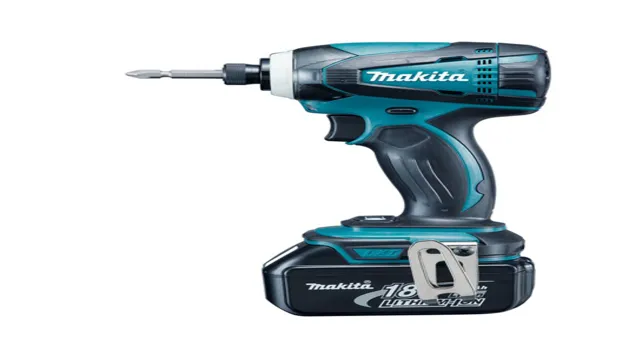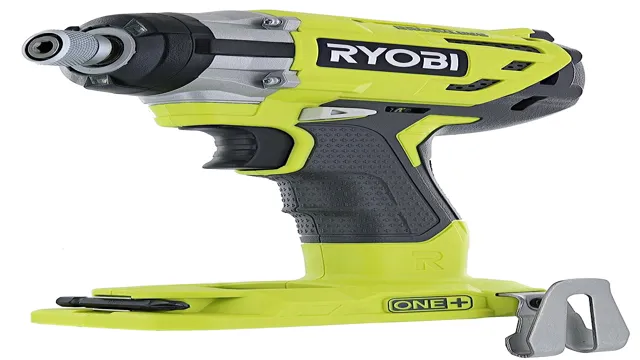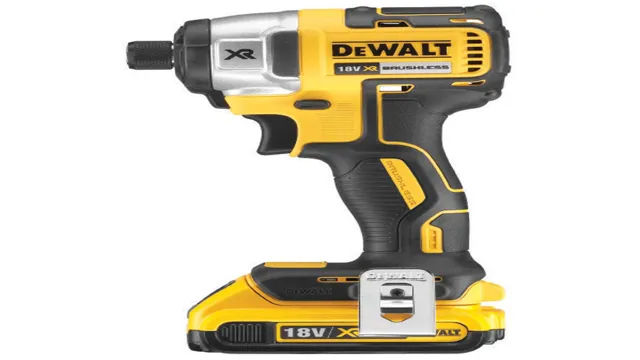Is Hammer Drill Same as Impact Driver? Get the Facts Here!
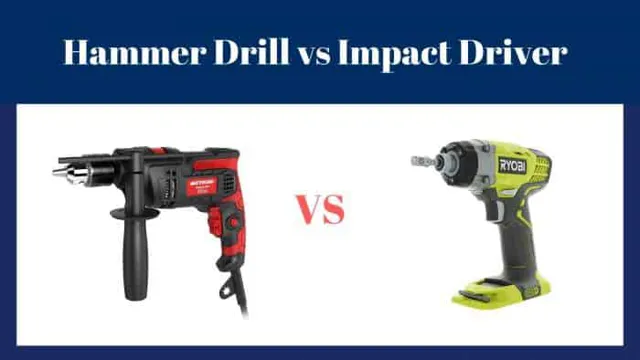
Hammer drills and impact drivers are the power tools you need when you’re working on a construction project that requires drilling through hard surfaces like concrete and metal. But what sets them apart? Hammer drills are designed to provide a hammering action that helps break up tough surfaces while drilling, while impact drivers are designed to provide more torque and speed to drive screws and bolts. To put it simply, a hammer drill is like a hammer and a drill combined, while an impact driver is like a super-powered screwdriver.
But, which one should you choose for your project? That depends on the task at hand. In this blog, we’ll explore the main differences between hammer drills and impact drivers, the advantages and disadvantages of each, and which one is best suited for specific projects. Whether you’re a DIY enthusiast or a professional contractor, understanding the differences between these two power tools can help you choose the right one and get the job done efficiently.
Let’s dive in and explore the intricacies of hammer drills and impact drivers.
Understanding Hammer Drills and Impact Drivers
When it comes to power tools, there are many different types to choose from. Two popular options for drilling holes into hard surfaces are hammer drills and impact drivers. Although they might seem similar at first glance, they have different functions and uses.
So, is a hammer drill the same as an impact driver? The answer is no. A hammer drill is designed for drilling into hard surfaces like concrete or masonry, and it has a hammering motion that helps to break up the surface while drilling. On the other hand, an impact driver is meant for driving screws and fasteners into tough materials like wood or metal.
It uses an impact mechanism to deliver more torque to the screw, making it easier to drive it in without stripping the head. While both tools might seem interchangeable, using the wrong tool for the job can result in poor results or even damage to the tool. So, it’s important to choose the right tool for the task at hand.
Hammer Drills
Hammer drills and impact drivers are two essential tools for DIY enthusiasts and professionals alike. A hammer drill is designed to drill holes into masonry, concrete, and other tough materials. It uses a piston mechanism to create a hammering motion behind the drill bit, which helps to break up the material and make drilling easier.
On the other hand, impact drivers are perfect for driving screws and bolts. They deliver high torque force that allows the user to screw in even the most stubborn screws with ease. Unlike hammer drills, impact drivers don’t feature a hammering action but instead rely on a rotating mechanism that delivers an impressive amount of force.
It’s important to note that these tools are designed for different tasks and uses. Understanding the differences between them will help you choose the right tool for the job and ensure that you achieve the best results. So, whether you’re building a new deck or installing drywall, having a hammer drill and impact driver in your toolbox will make any job easier and more efficient.
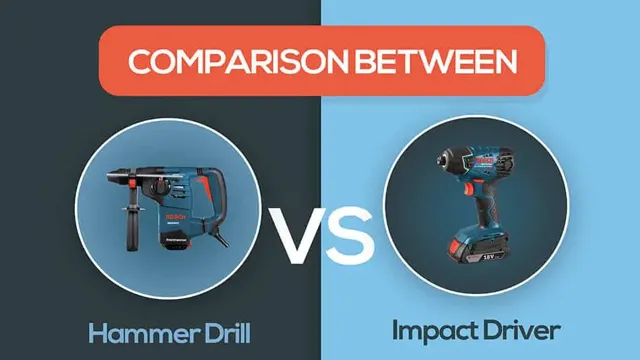
Impact Drivers
Impact drivers have become a popular tool in the toolkit of both professionals and DIY enthusiasts. They are similar to standard drills but with a few key differences. Unlike hammer drills that rely on the user’s force to exert torque, impact drivers use rotational force and powerful impacts to drive screws and bolts into hard surfaces.
The impact driver’s small size and lightweight make it easier to use in tight, confined spaces. This tool is also powerful and versatile, capable of driving long screws and bolts with ease. Overall, if you’re looking for a reliable and efficient way to complete your projects quickly and effortlessly, investing in an impact driver is a great idea.
Try out these handy tools and see the difference they can make in your DIY projects!
Comparing Hammer Drills and Impact Drivers
Is a hammer drill the same as an impact driver? Although both tools are used for drilling, they have distinct differences. A hammer drill is designed to be used for heavy-duty tasks like drilling into metal or concrete, while an impact driver is ideal for repetitive tasks like inserting screws into wood. The main difference between the two is the mechanism of action.
A hammer drill works by applying a forward and backward hammering motion to the drill bit, while an impact driver delivers rotational force in addition to a series of quick, jarring impacts. This makes it a more efficient tool for driving screws and other fasteners into tough materials. Ultimately, the choice between a hammer drill and an impact driver depends on the specific job at hand.
While they may not be interchangeable, both tools are essential for any DIY enthusiast or professional builder’s toolkit.
Function
When it comes to choosing between a hammer drill and an impact driver, it’s important to understand the functions of each tool. While both tools are used for drilling holes and driving screws, they serve different purposes. A hammer drill is used for drilling holes through harder materials such as concrete or masonry.
The hammer mechanism helps the drill bit penetrate tough surfaces, making it ideal for construction projects. On the other hand, an impact driver is designed for driving screws into hard materials with more power and precision than a regular drill. It’s perfect for projects that require a lot of fasteners, such as building furniture or installing cabinets.
In summary, it all comes down to the type of project you are working on and the materials you are working with. If you need to drill through hard surfaces, a hammer drill will be your best bet. However, if you’re driving a lot of screws into hard materials, an impact driver will be the right tool for the job.
Power
When it comes to drilling holes into tough materials, hammer drills and impact drivers are two of the most powerful tools available. These tools are often confused for one another, but they have distinct differences. A hammer drill is typically used for drilling into concrete or masonry, because it has a hammer function that pounds the bit as it rotates to break up tough materials.
An impact driver, on the other hand, is designed for driving screws and bolts into hard materials, and it uses a rotational hammering action to deliver more torque than a regular drill. So, while both tools are powerful and can handle tough jobs, they have different functions. When considering which tool to choose, it’s important to think about the specific task at hand and which tool will be best suited for the job.
Whether you need to drill into a concrete wall or drive screws into a wooden beam, make sure you have the right tool for the job.
Torque
Torque When it comes to drilling through tough surfaces, hammer drills and impact drivers are both great options that provide different benefits. For tasks that require high torque, such as drilling through concrete or masonry, a hammer drill is the better choice. Its action allows for a pounding motion that breaks up tough material, while its high speed and force make drilling a breeze.
On the other hand, impact drivers are great for tasks that require less torque, such as screwing in fasteners. They offer a quick, rotational motion that provides bursts of power, making them perfect for repetitive tasks like building a deck or framing a house. So, if you’re trying to decide between a hammer drill and an impact driver, think about the job at hand.
Are you working with tough, thick material that requires high torque? Go for a hammer drill. Do you need a tool that can quickly and easily handle repetitive tasks that require less force? An impact driver is the way to go. Choosing the right tool for the job will save you time and effort in the long run and, ultimately, help you produce better results.
When to Use a Hammer Drill vs Impact Driver
“Is a hammer drill the same as an impact driver?” This is a common question among DIY enthusiasts and even professionals. While the two tools may look similar, they serve different purposes. A hammer drill is designed for drilling into hard materials like concrete, bricks, and stone.
It has a special mechanism that creates a back and forth motion, which helps to break up tough materials. On the other hand, an impact driver is used for driving screws and other fasteners into wood, drywall, and other soft materials. It has a high torque output that generates a sudden burst of rotational force, making it easier to drive screws with less effort.
So, the next time you’re faced with a tough drilling task, reach for a hammer drill. And when you need to drive screws quickly and efficiently, go for an impact driver. Knowing the differences between these two tools can help you choose the right tool for the job and get the best results.
Hammer Drill Usage
Hammer Drill If you’re trying to drive fasteners into tough surfaces such as concrete or brick, then a hammer drill is what you need. This tool has a specialized feature that allows it to create a pounding motion as it drills. The pounding action of the hammer drill makes it easier to break through dense materials and reduces the amount of force necessary to complete the task.
However, if you’re only fastening screws into wood or metal, then an impact driver might be a better choice. Impact drivers are ideal for tasks such as driving long screws and bolts, and for creating deep holes. They offer high-torque rotational force that is designed to provide extra power and support when driving screws.
So, when deciding whether to use a hammer drill or impact driver, consider the material you’re drilling into and the type of fastener you’re using. If you’re dealing with dense materials, then a hammer drill is the best choice, while an impact driver will work well for lighter duty tasks.
Impact Driver Usage
When it comes to drilling into tough surfaces like concrete or masonry, you might find yourself torn between using a hammer drill or an impact driver. The main difference between the two tools lies in their mechanisms and the tasks they’re best suited for. A hammer drill delivers a forward and backward motion, allowing it to hammer into the material, which is particularly useful for making holes in hard surfaces without shattering them.
On the other hand, an impact driver provides a rotational force that’s transferred to the screw or nut evenly and consistently, allowing for faster and smoother driving. Therefore, if you’re working with tough surfaces that require high torque to complete the job, an impact driver is the best tool to pick. However, if you need to make holes into hard materials without damaging them, then a hammer drill is your go-to option.
It all boils down to the nature of the job and the type of tool that’s best suited for it.
Conclusion
While the similarities between a hammer drill and an impact driver are not to be underestimated, they are not exactly identical twins. It’s like asking if a hammer is the same as a screwdriver – they both serve a different purpose, but they are tools with their own special abilities. So while they may look alike, sound alike, and even feel alike to some extent, it’s important to know which one to use for the task at hand.
With these tools in your arsenal, you’ll be ready to tackle any DIY project – just don’t get them confused!”
FAQs
What is the difference between a hammer drill and an impact driver?
While both tools are used for drilling, hammer drills have a rotating action combined with a back-and-forth motion that allows them to drill through tougher materials like concrete and masonry. Impact drivers, on the other hand, are designed for driving screws and bolts with high torque and speed.
Can you use a hammer drill as an impact driver?
No, you cannot use a hammer drill as an impact driver as they serve different purposes. However, there are some hammer drills that have a switch that allows them to function as a regular drill without the hammer function.
Which tool is better for drilling into concrete, a hammer drill or an impact driver?
A hammer drill is better for drilling into concrete as it has a hammer function that allows it to easily break through the tough surface. An impact driver may be able to drill into concrete, but it will require a special masonry bit and more time to accomplish the task.
Are hammer drills and impact drivers more powerful than regular drills?
Yes, both tools are generally more powerful than regular drills due to the higher torque and speed they produce. This makes them ideal for tougher jobs and heavy-duty usage.
Can you use impact-rated bits in a hammer drill?
Yes, you can use impact-rated bits in a hammer drill. Impact-rated bits are designed to handle the higher torque and speed produced by impact drivers and are also compatible with hammer drills.
Do you need special bits for each tool?
Yes, each tool requires specific bits designed to handle its unique functions and power output. Hammer drills require masonry bits for drilling into concrete and other hard surfaces, while impact drivers require impact-rated bits for driving screws and bolts with high torque.
Which tool is better for automotive work, a hammer drill or an impact driver?
An impact driver is generally better for automotive work, as it is designed for driving screws and bolts with high torque and speed. Hammer drills, on the other hand, may damage the vehicle and should be avoided for this type of job.
